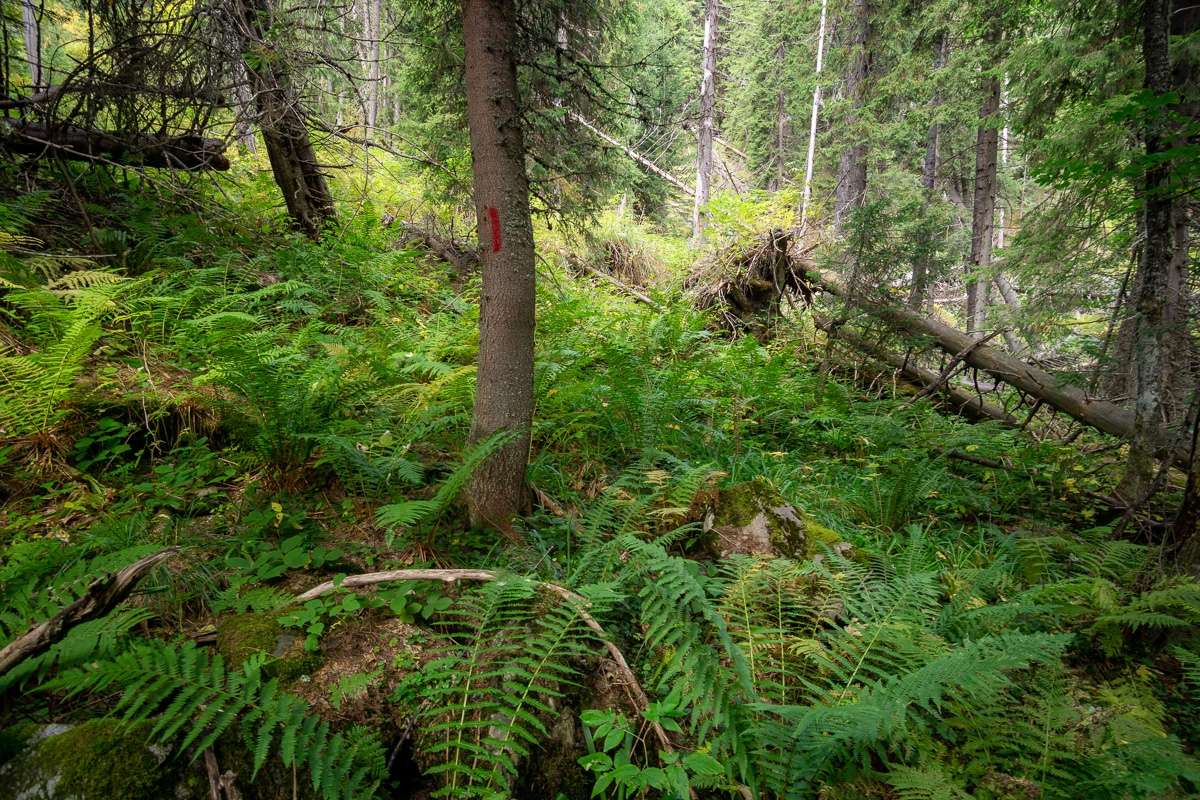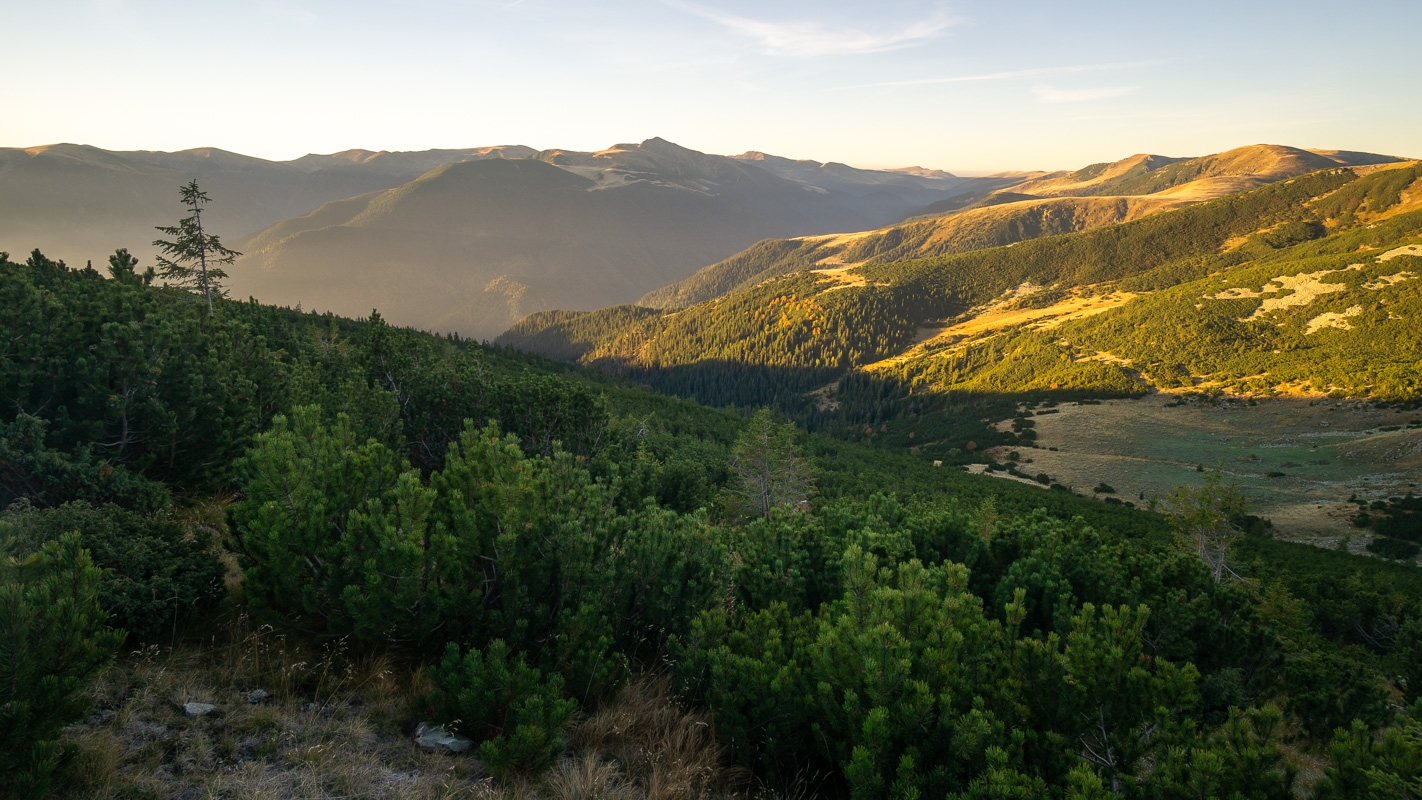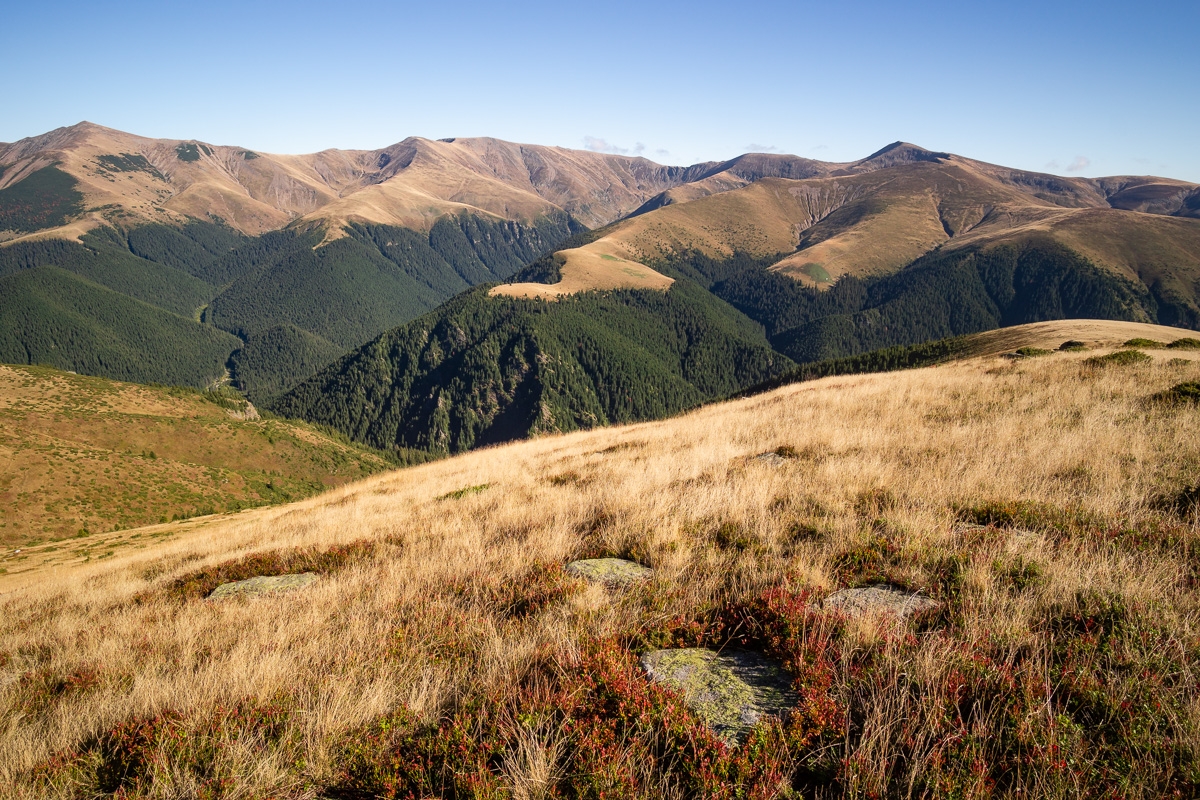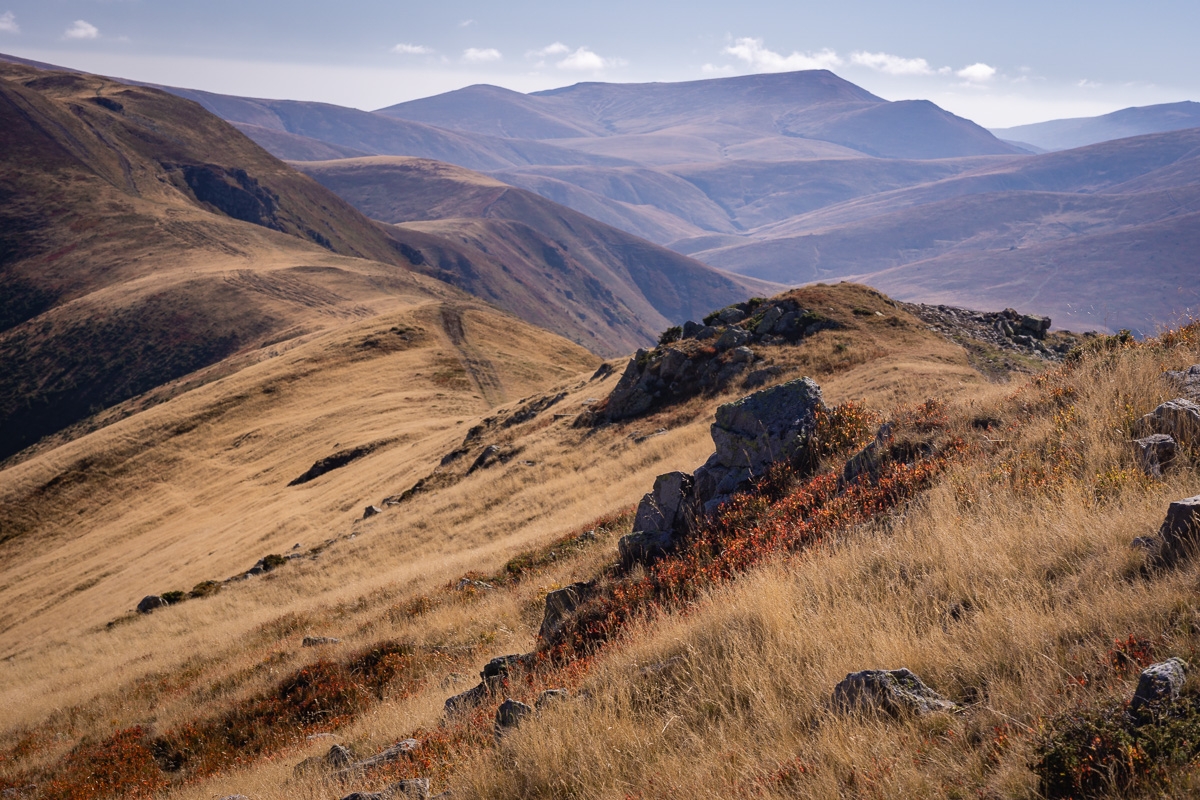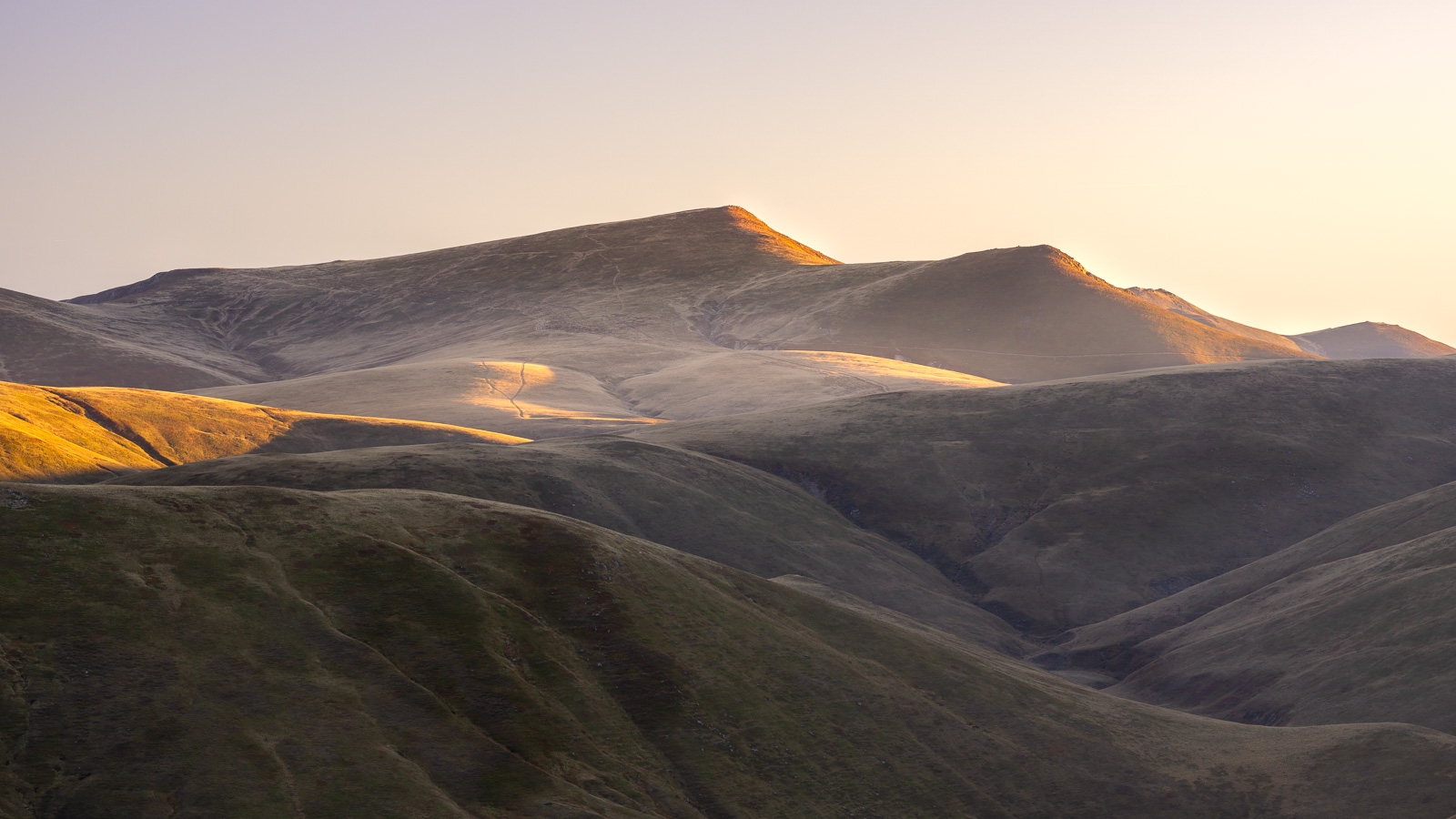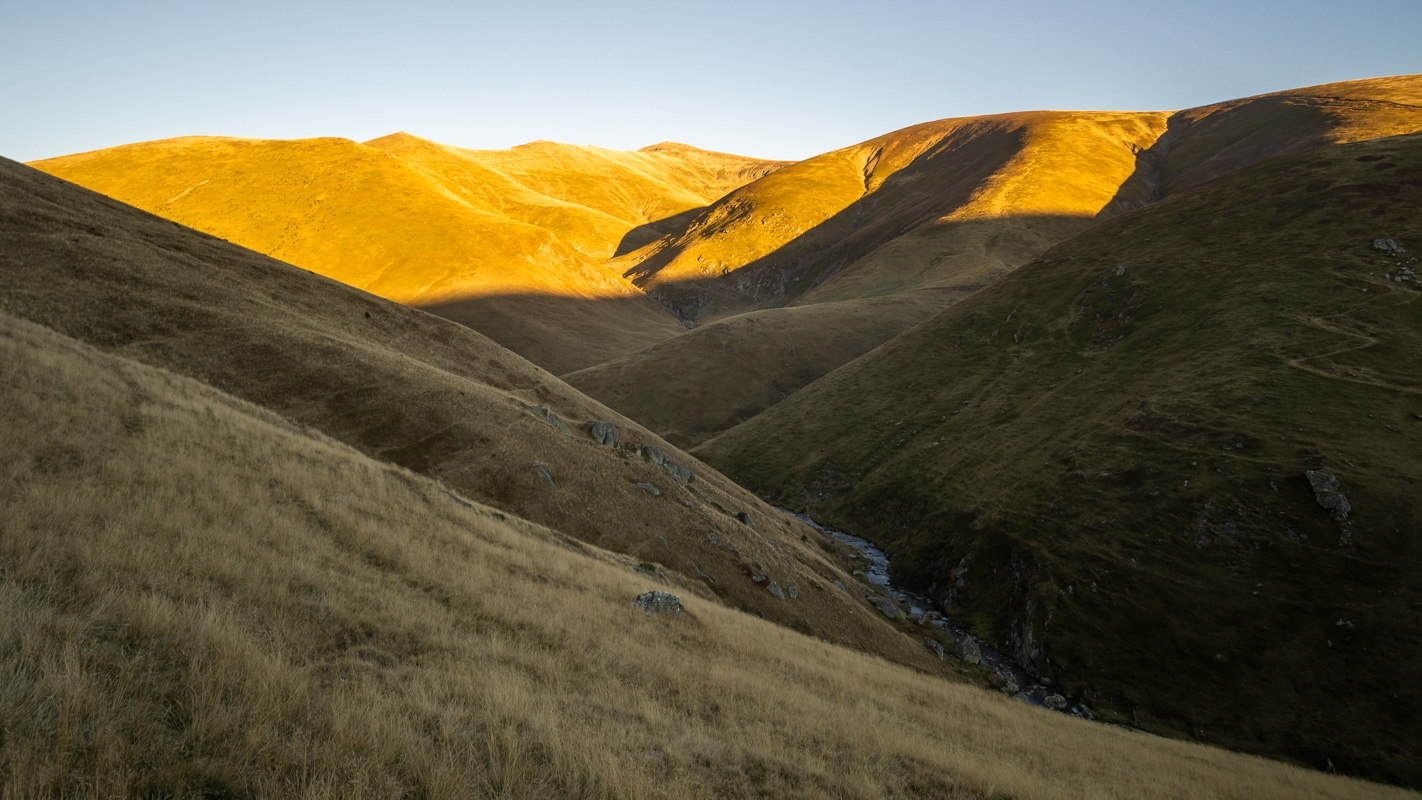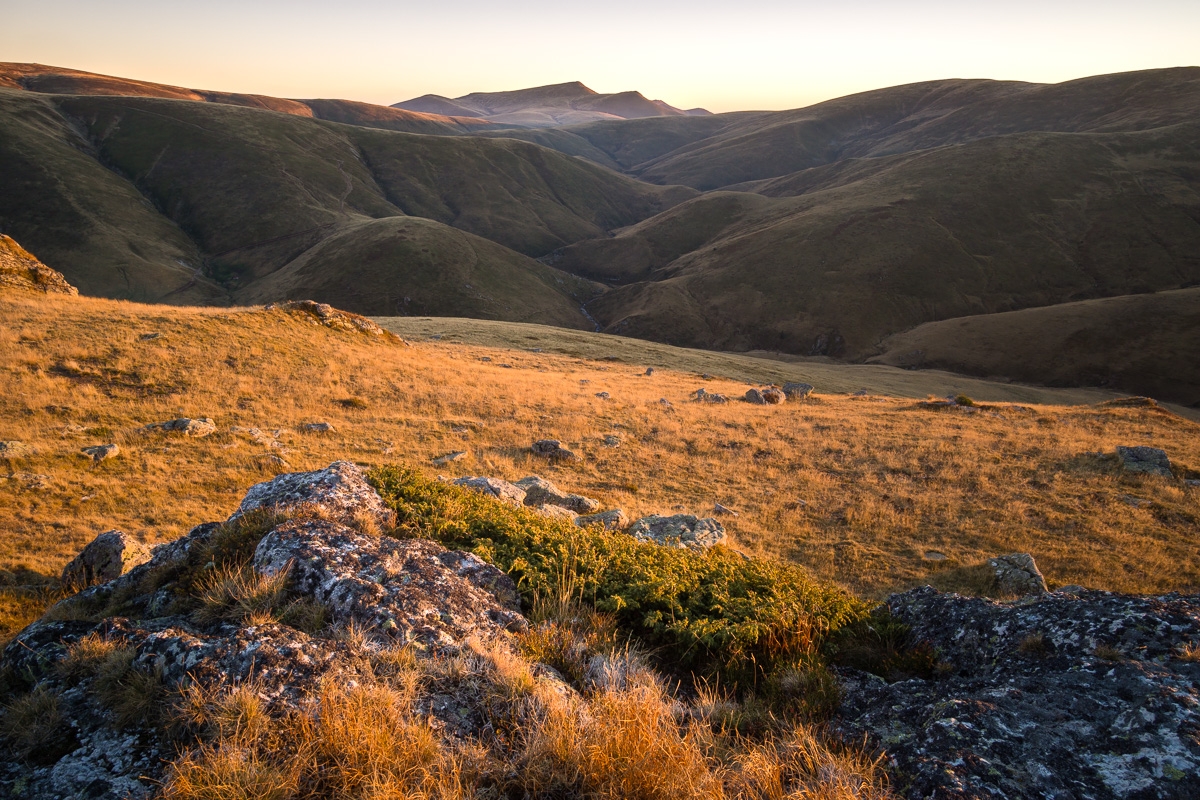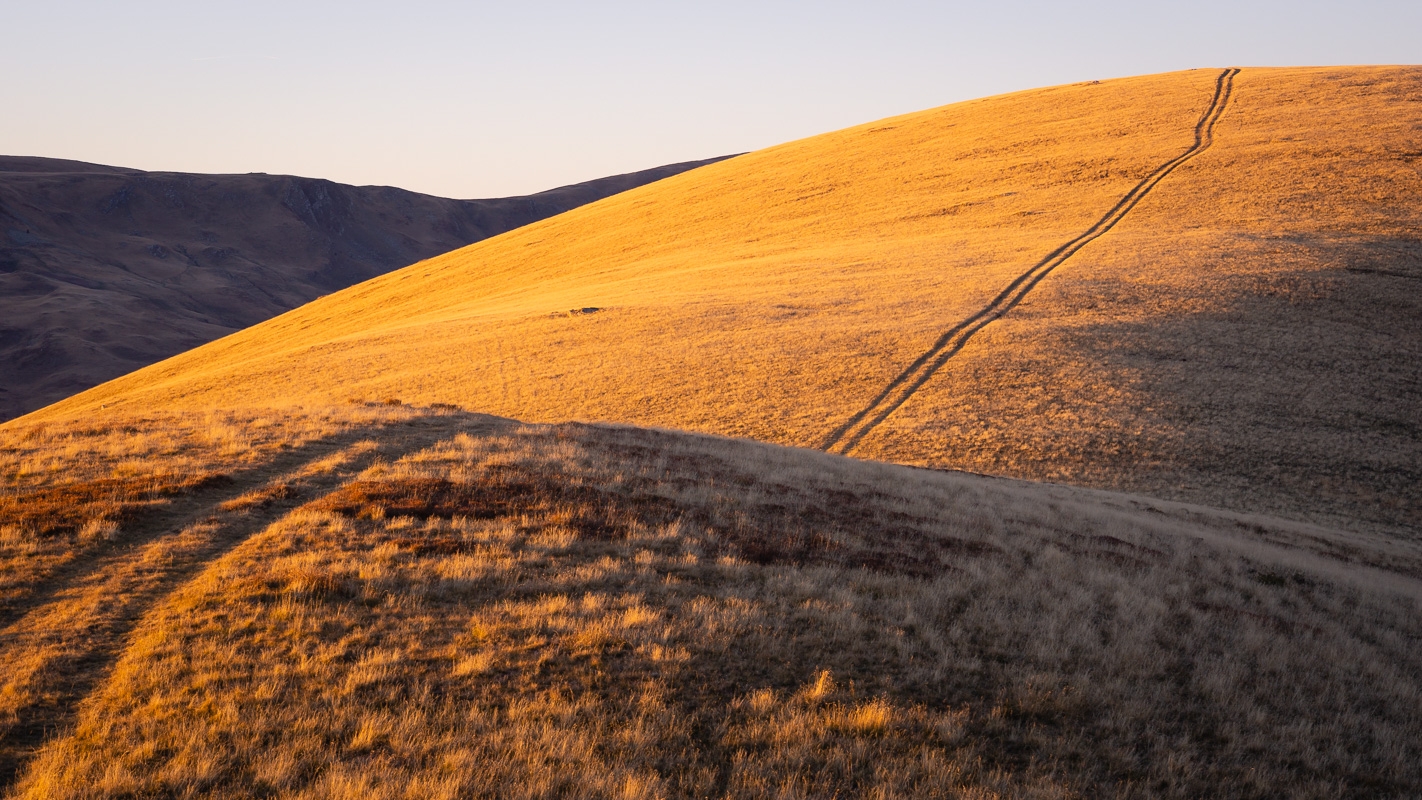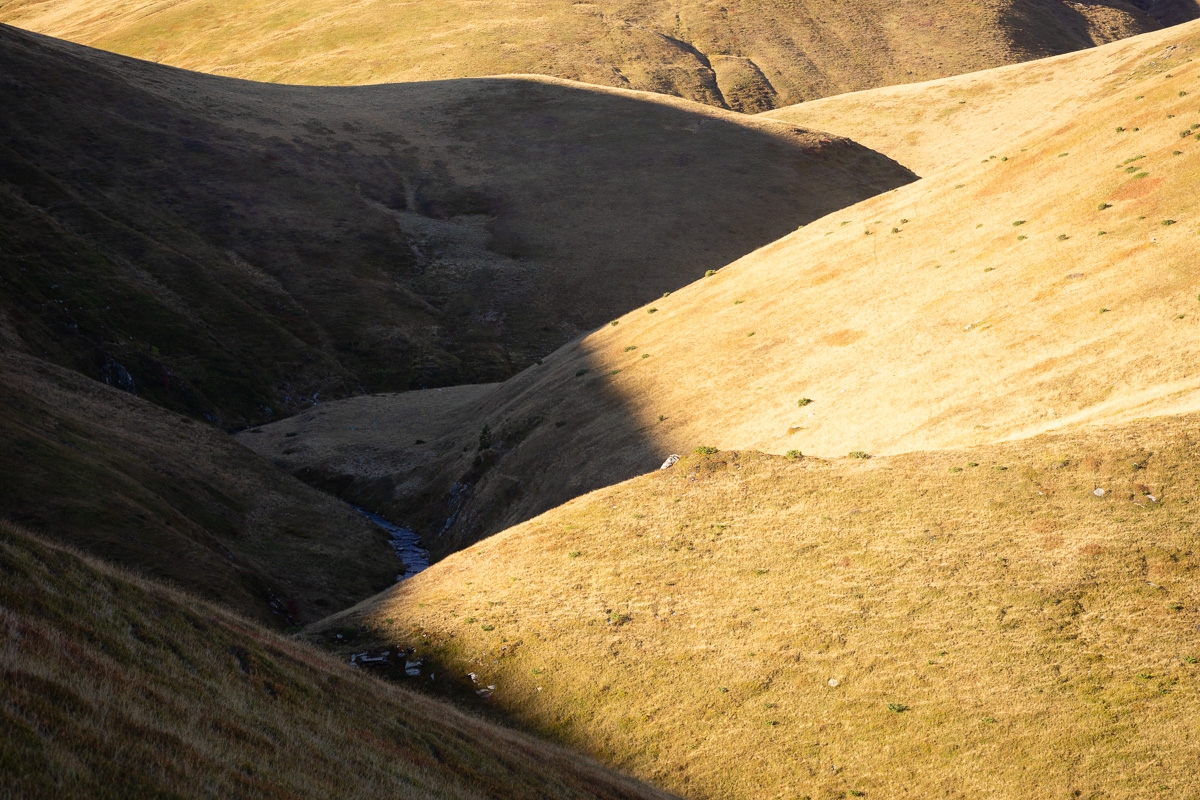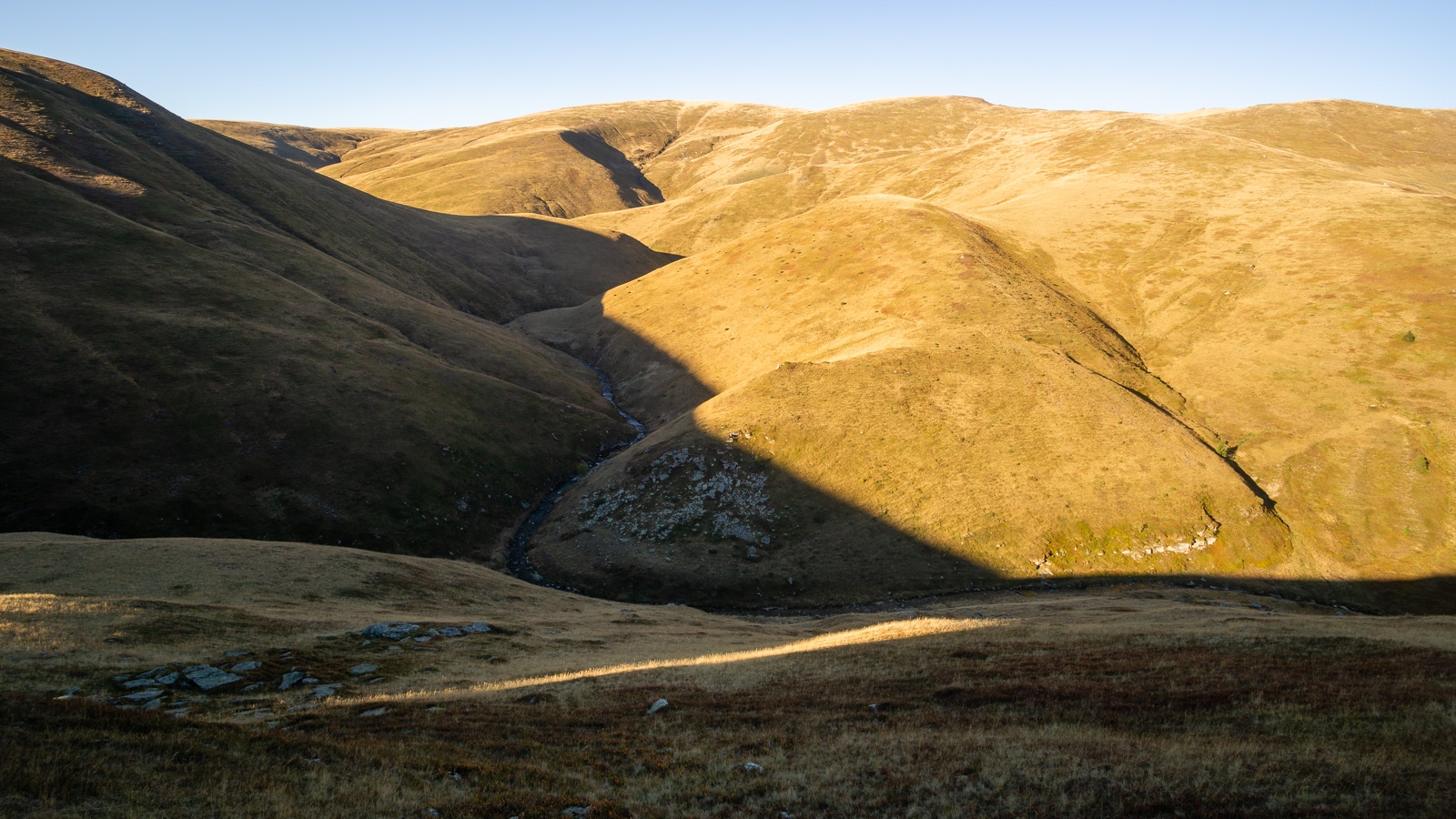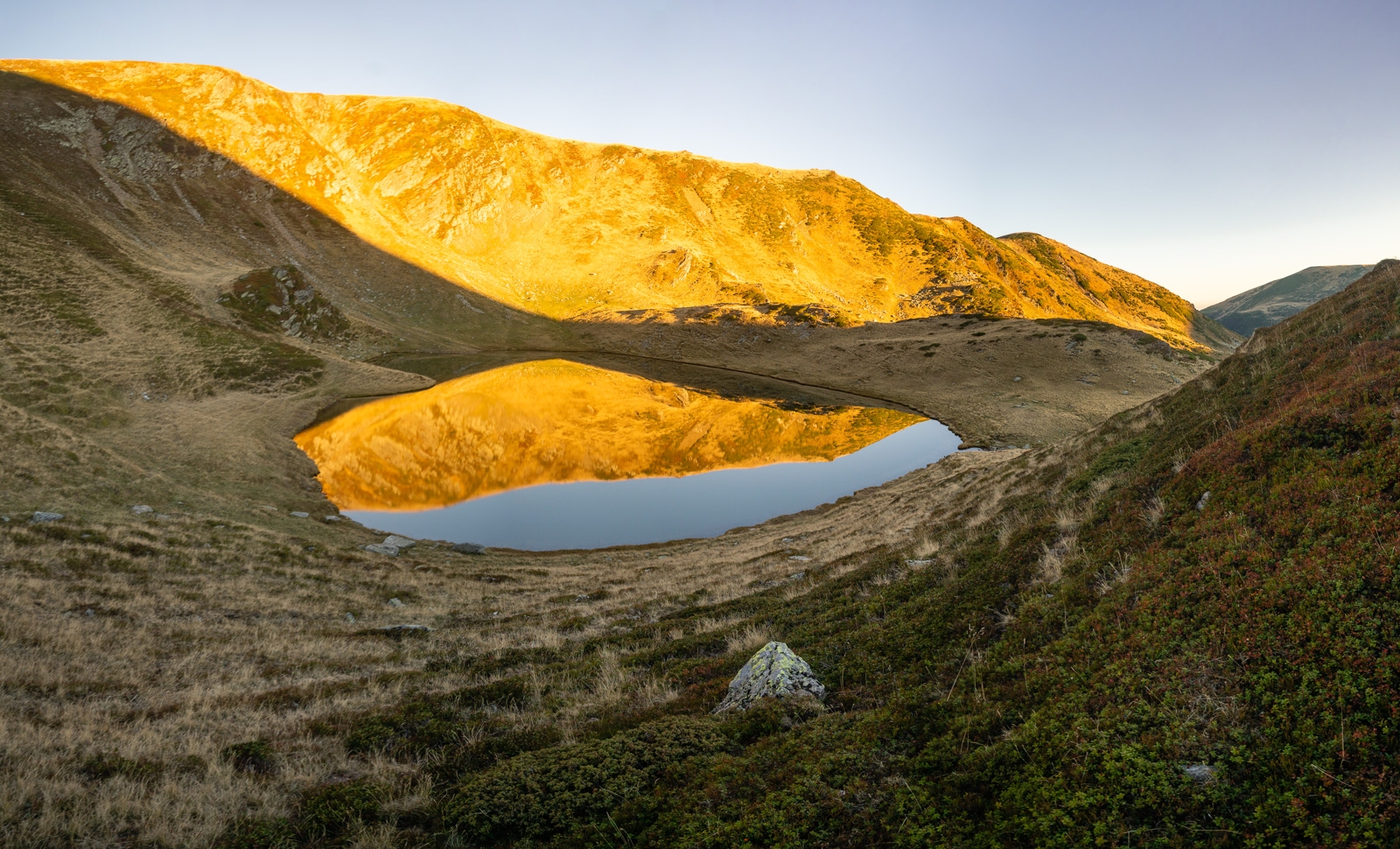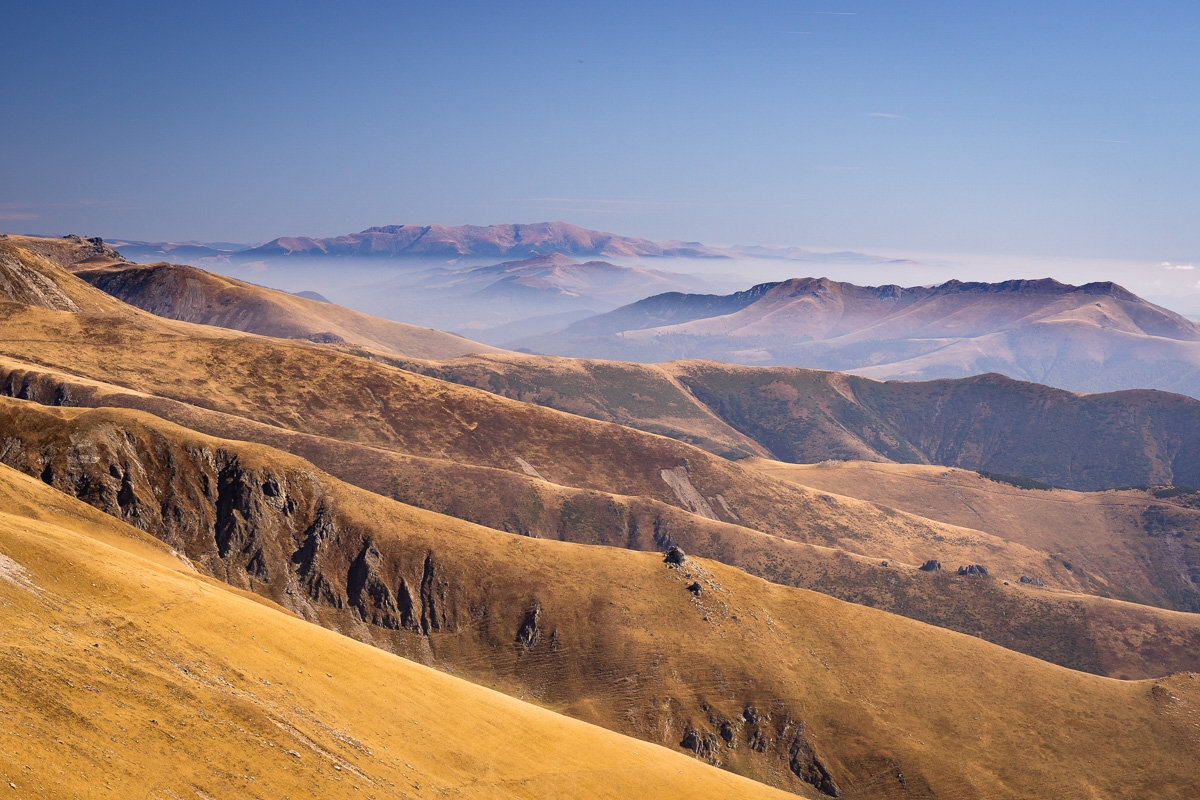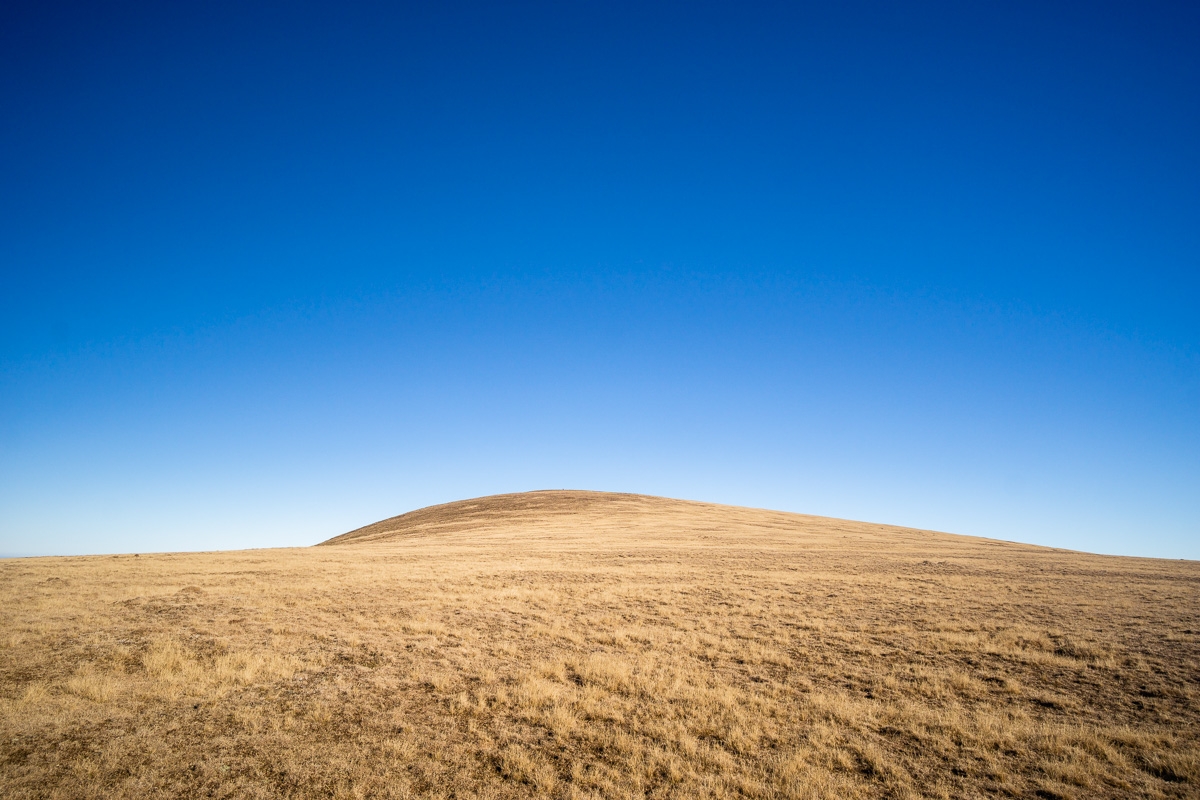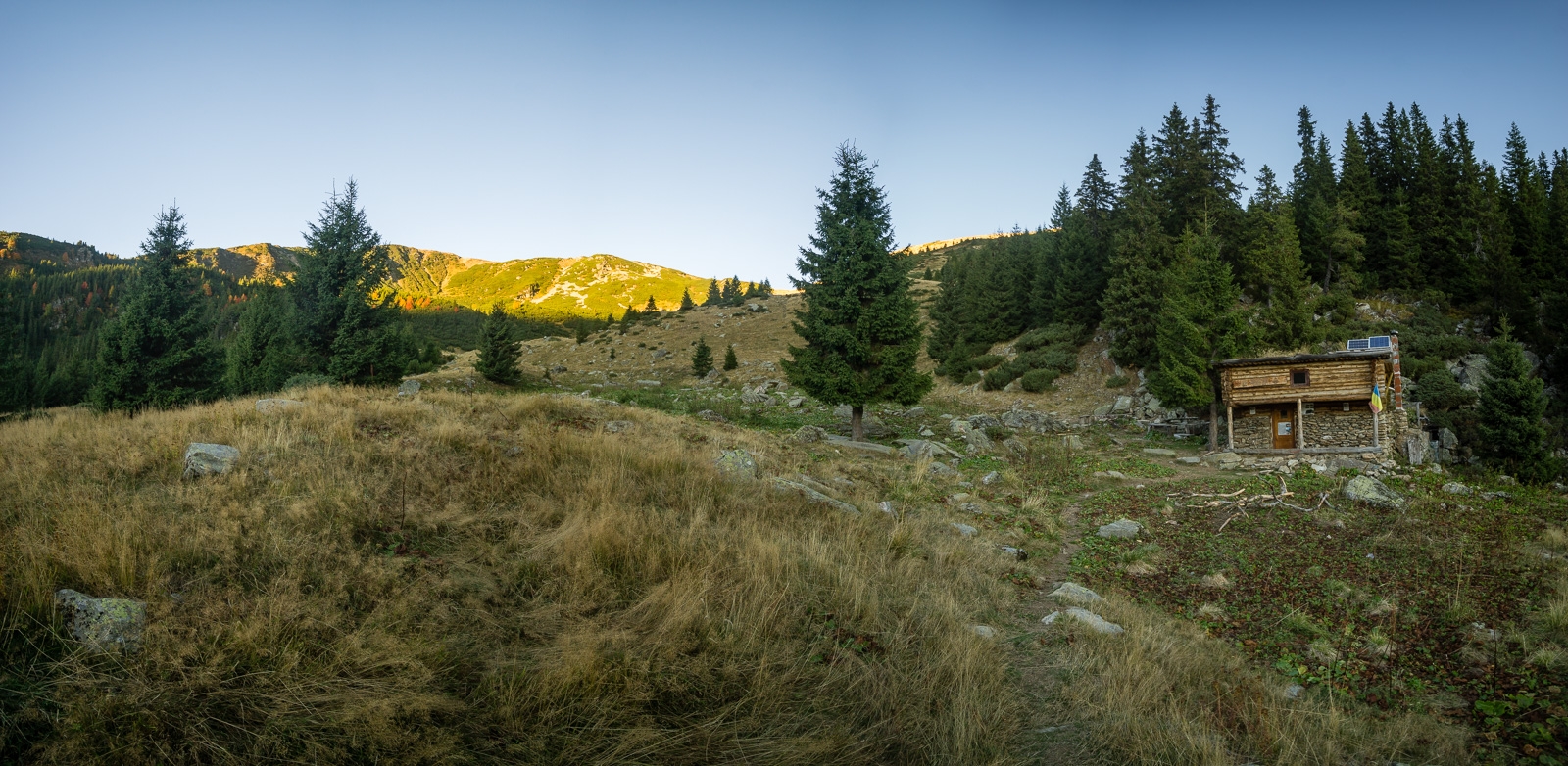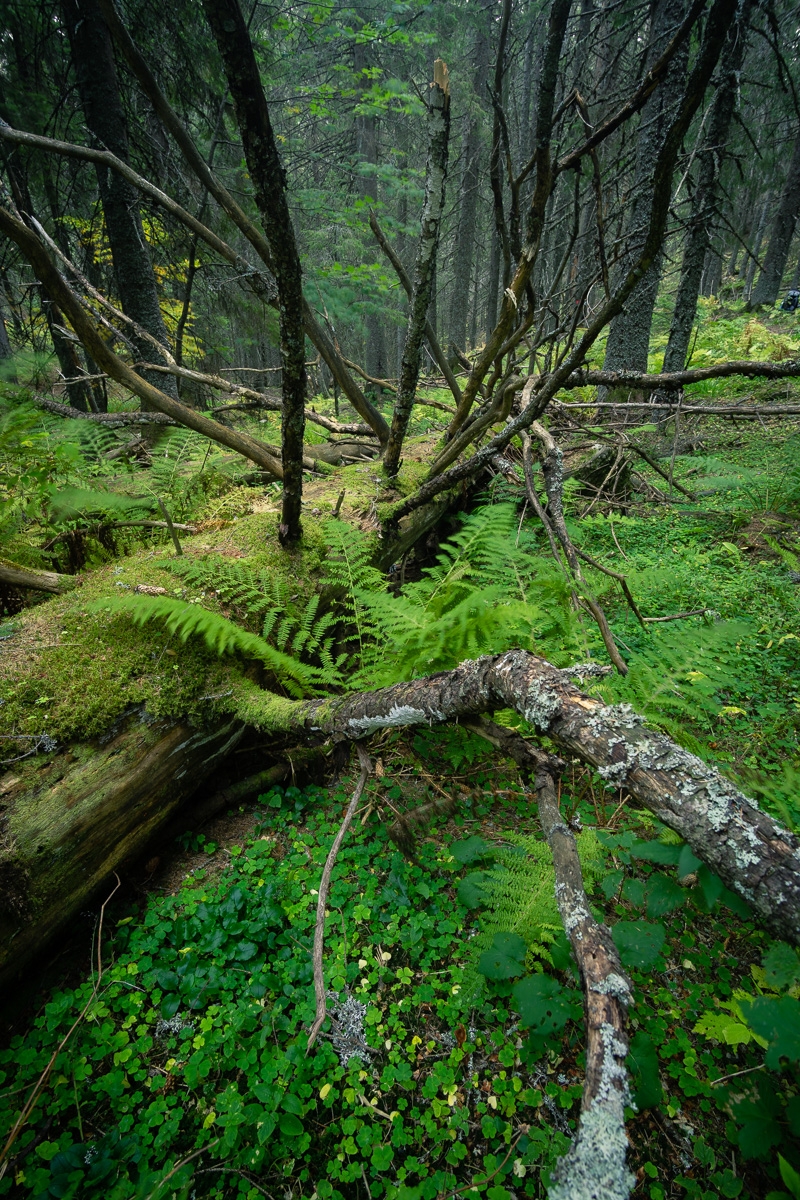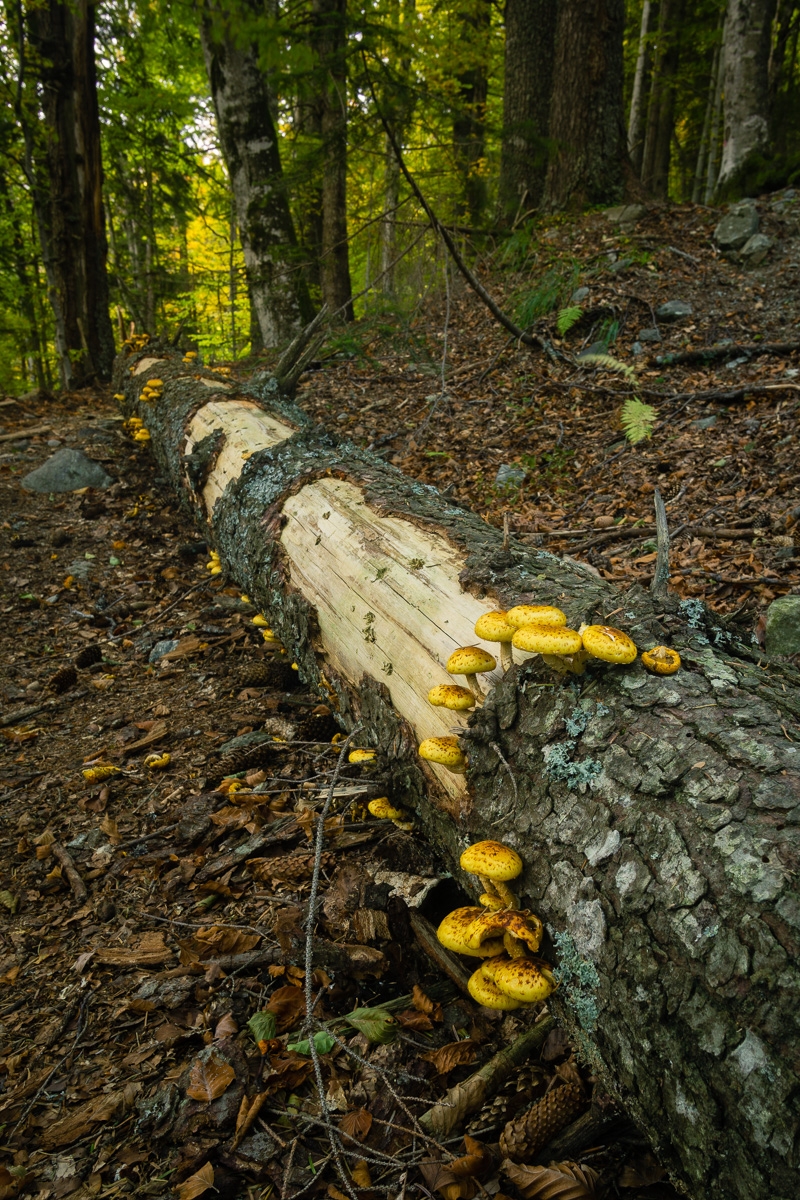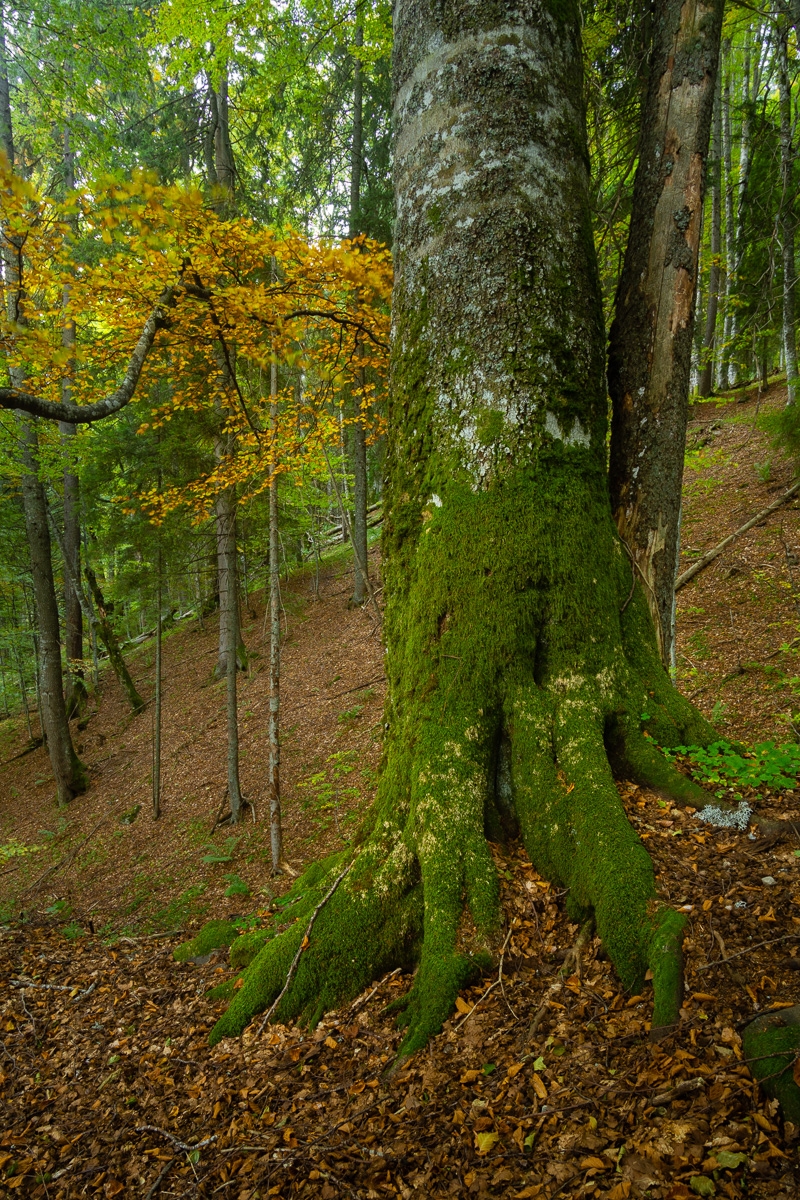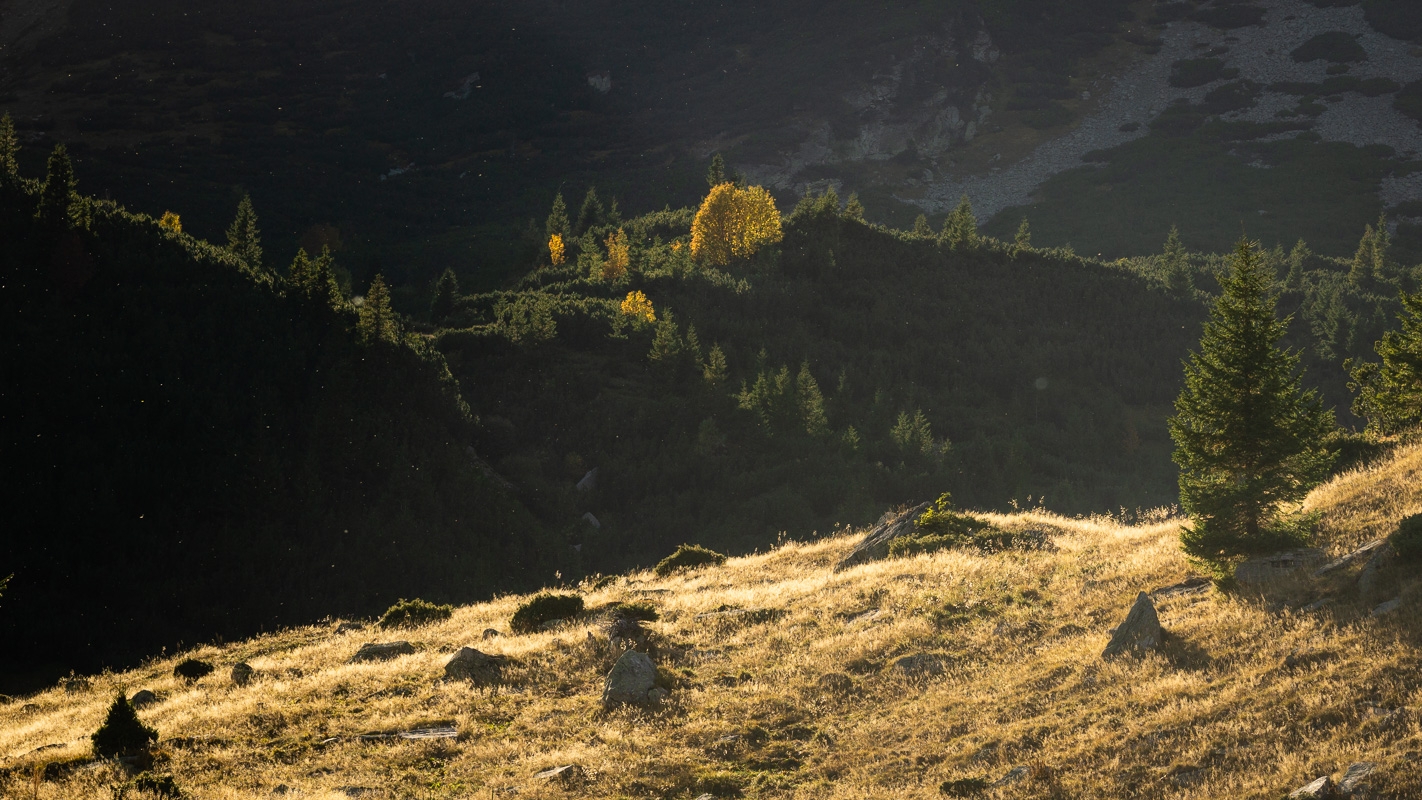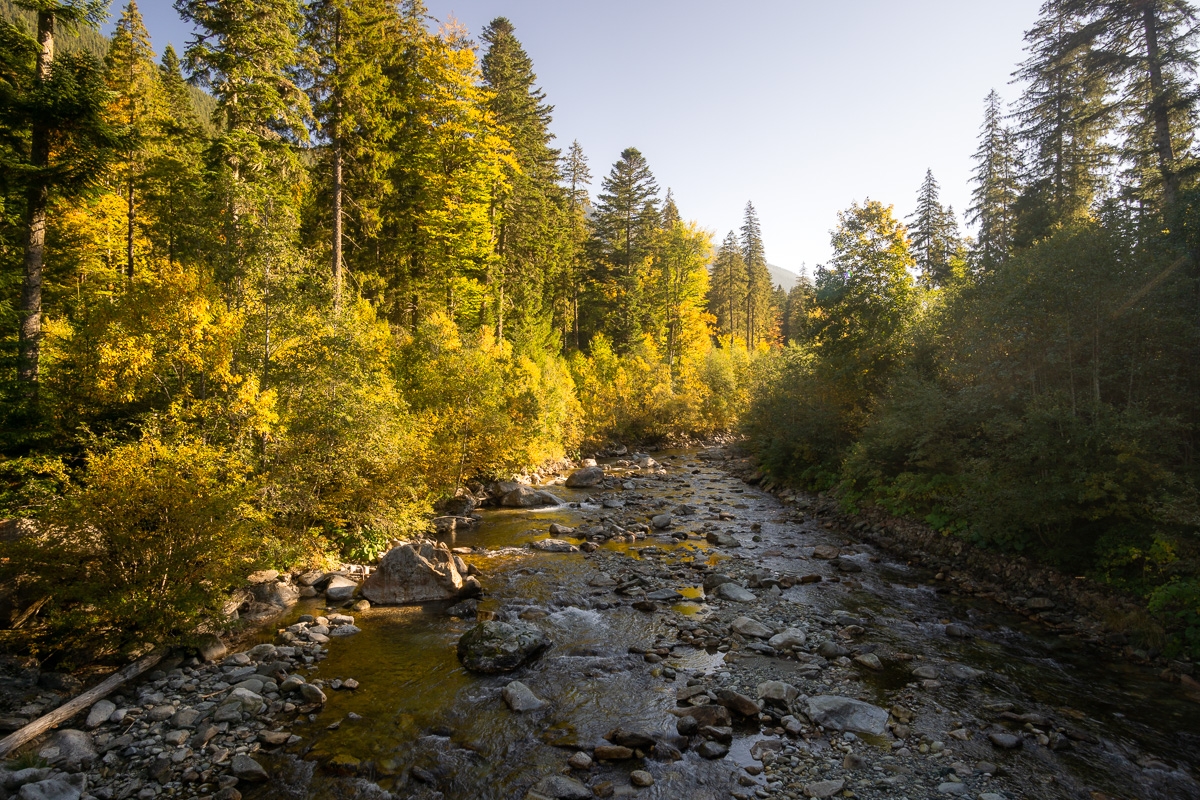At the very end of the Carpathian Arch, where the Banat begins, the mountains rise for the last time to a height of two thousand metres. They represent the first significant obstacle to the winds blowing in from the Serbian plains. Both the western Țarcu [Tsarku] and the eastern and higher Godeanu, however, lie somewhat in the shadow of the better-known and much-visited Retezat. In contrast, the bare grassy ridges here are virtually deserted. These are not high mountains, rather rounded and friendly hills. All the more pleasing to any wandering soul, longing to walk the grassy plains freely, often unaccompanied by trails, longing to lie down for a while in the afternoon sun, and realizing that virtually nothing has changed here for centuries.
Aside from the Gura Apelor dam, nestled in a deep valley right between the two mountain ranges, the infrastructure here is virtually non-existent. Even a glance at the map confirms that these are perhaps two of the most remote mountain ranges in the whole of Romania. The whole area is also the largest contiguous area of native forest in Europe after Scandinavia. And that sounds like a reason to start wandering...
However, the approach to Țarcu from the dam shows how things really are. The trail, which clearly shines on the map, does not shine at all in the forest. There is no trail. Just ferns, mud, nettles, fallen trees. It reminds me of something similar from the last year. But from time to time the ferns are broken, the nettles trampled and the occasional footprint appears in the mud. It's not much, but it's actually enough. Plus, it's still climbing up a large gutter and there's no way to get lost. There are actually markings too - about once every half kilometre a tiny red line appears on a random tree. It's often in the most inaccessible terrain by far...
But at the tree line, all the fun stops. The spruces freely cross into a zone of kneeling trees twice the height of man. Pines with intertwined and dense branches. It's to the left left, it's to the right, it's everywhere. The trail, of course, is nowhere. Nearly an hour-long attempt to walk straight through ends in failure after 50 metres. Return to the forest. In two hours it will be dark, it's impossible to make it back down in the light. There's no way up. I sit, thinking, catching a hint of panic that needs to be quelled. For the first time ever, I come to the decision to give up. To give up and go back. It's safer, after all, even though I know that where it was barely possible in the woods in the light, it will be much worse in the dark.
The return is accompanied by the awful weight of the fact that the ridge is actually close, that it's maybe a few dozen yards to the open plains where it will be easy. A few hundred metres below, on the left, a path winds along. It leads to a clearing where you can see a side ridge with a meadow and a sheepfold. It's a short distance, albeit on the wrong side of the ridge, but that wouldn't matter too much. Just get there. In the middle of the path lies a giant turd made up of undigested cranberries. Maybe it's not even a pastoral trail, maybe it's just an animal trail. It winds its way up a steep hillside, around a few rocks, through islands of pines but unerringly leading up. I'm trying to follow it, it has to work, otherwise I'm screwed. In short, it has to.
And it's working well. Near the saddle, there's an unadulterated path to the ridge. It's not on the maps, but who cares? It'll be easy now. And... it's not. At the point where the climb turns into a traverse along the contour, the trail suddenly disappears into the cairn again. For the second time, I try to make it through, but the fog comes and darkness falls. I turn on my headlamp, but I can't continue, the direction would be impossible to keep. I set up my tent at the first place that is at least a little bit suitable. I don't like it, there is still too much of tall vegetation all around. Deer can be heard from the valley all night.
In the morning, the autumn sun shines bright and clear. The tent is covered in a thick layer of frost. In the light, however, I can't find the path either. There isn't one, there can't be. There is only one option - to get to the grassy valley, from there I can see a viable terrain to get to the ridge - to go around the Custuria peak from the south. I struggle in dense pines for perhaps an hour before the bushes part and golden grassy plains appear.
I'm laughing, it's really easy now. I go around Custuria through the stones field, finally I'm on the ridge. Behind my back I see the mountains of Retezat, on my left the ridge of Godeanu, and on my right the last peak of Muntele Mic, and beyond that nothing but the Banat plains. I eat a cachaça and handfuls of cranberries.
The North Korean highway runs along the ridge, a road of a few lanes, but there is no one to walk on them. It's not clear to me how such a road can hold up here when hardly anyone walks. The trail descends into the Iepii saddle, winding over the peaks of Baicu and Mătania. There is a dry spring in the Șcheiului saddle, never mind, just continue into the valley of the Șes River.
Behind the La Mlăci saddle, things are starting to happen. The Țarcu Mountains turn into the Godeanu around here and the river cuts through the grassy hills. Here it doesn't resemble high mountains at all, more like huge loaves of bread strewn across the landscape. The golden autumn colour of the grass enhances this resemblance. Loaf mountains, that's what I call it here. I walk down the plains to the river, no path, just like that. Total freedom. I pitch my tent by the river. Soon the valley fills with shadow and the cutting cold rising from the water. I pick out the nearest loaf and climb up for the last rays of sunlight. The summit seems close, but the bare plains are deceptive, the hill bending and stretching, seemingly receding even as it gets closer. Strange is this dimensionless landscape. Open and empty, and yet everything is to be found here.
The morning sun greets the loaves from the other side and cuts them in half with a sharp shadow. I've been climbing Godeanu for a long time. I like it here in the Godeanu mountains, perhaps more than in the rockier Țarcu. Where Țarcu offered plains strewn with rocks, here the bare grassy plains stretch on forever and then drop abruptly in rocky troughs into the valley. It is very reminiscent of the Low Tatras, which someone took and threw to the end of the world.
Behind Piatra Scărișoarei I meet a group of locals with two off-road cars (I finally understand how the occasional heavily eroded sections of the road are created) barbecuing in the afternoon sun. We get to talking, when they find out I'm from the Czech Republic, they repeat "so far!" and ask if I need anything. A sausage from the grill looks tempting, but I eventually decline. Everything I need is already on my back. At the nearby Lake Scărișoara I find a lee and bivouac. It is one of the few water pearls in these mountains and a surprisingly rare source of water. The lake is crystal clear, with only millions of tadpoles swimming in it.
With the morning chill I climb back to Moraru. From here we can see more mountains to the east, probably Vâlcan and Parâng. Below the highest peak of the Godeanu mountains, Gugu, my achilles swells. I descend from the summit with pain with every step, which brings tears to my eyes. Fortunately, the Gugu refuge is not far away, just a few kilometres and 600 metres of altitude. I arrive at the shelter early, it is perhaps only two o'clock in the afternoon. But I would have stopped here anyway, I simply love the atmosphere of mountain huts. I sunbathe in the roasting sun and let the swelling go down.
It is a rare autumn afternoon, a huge number of insects are flying in the air, as if sensing the harbinger of the approaching winter, a winter that may come in a week, but also tomorrow. The sun shines with scorching power, but one step into the shade and it is unbearably cold. It's as if the whole mountains want to take their last breath before the fog and snow come. Enjoy it while it lasts.
Soon the shadow will engulf the whole valley and its shelter, but the opposite ridges will be golden in the rays for several long hours. Time stands strangely still, flowing continuously in a slow quiet stream. And the cold bites. The view from the shelter's doorstep is burned into my memory.
Inside, I examine a strange stove with several rusted storage vessels. It smokes awfuly, so I don't heat. I sign the guest book, the last person before me was here 4 days ago. End of the world. I like the stark warning on the door of the hut, delivered with a certain lightness and ferocity: 'Do not leave food scraps here that are not in a tin container. Food attracts rodents and rodents attract vipers. Remember that the nearest antidote is (maybe :) ) in Hațeg, which can be reached in 6 hours at the earliest."
As evening falls, the rodents really start to descend on the refuge. I just shine my headlamp across the room and a mouse stares at me, only to disappear after a few seconds. I'm discovering how well mice can jump. I don't want to sleep, so I try to hunt them for a while. When I get tired of it, I go outside to look up at the night sky. It's the same as it has been so many times, yet a little different each time. Like all the most common beautiful things.
In the morning the swelling on my leg is flattened, so I walk down to the valley without much difficulty. The trail leads through perhaps the most beautiful and diverse Carpathian forest I have seen so far. Occasionally the trail disappears, but only for a few metres, only to reappear safely with a sign. It occurs to me that it's actually very simple with signs. That we're missing out. We're just blindly following symbols that will lead us safely to our destination. Why become so simplistic? Why?
The forest here is amazing, dense, wild, changing. What a perfect contrast to the bare grassy plains somewhere up there. It leads me to the valley of the Lăpușnicul Mare river, where the autumn-coloured canopy is still golden in the low morning sun. Golden autumn. What a perfect punctuation to the rogue mountains of Țarcu and Godeanu!
It could be said that these are just the overblown Jeseníky Mountains, or perhaps the overgrown Giant Mountains, or that they resemble various Slovak mountains. And perhaps there would be a grain of truth in that, but that is not what the local hills are about. They are about freedom and liberty, wandering towards a goal and without a goal. Seemingly insignificant things that often mean everything.
